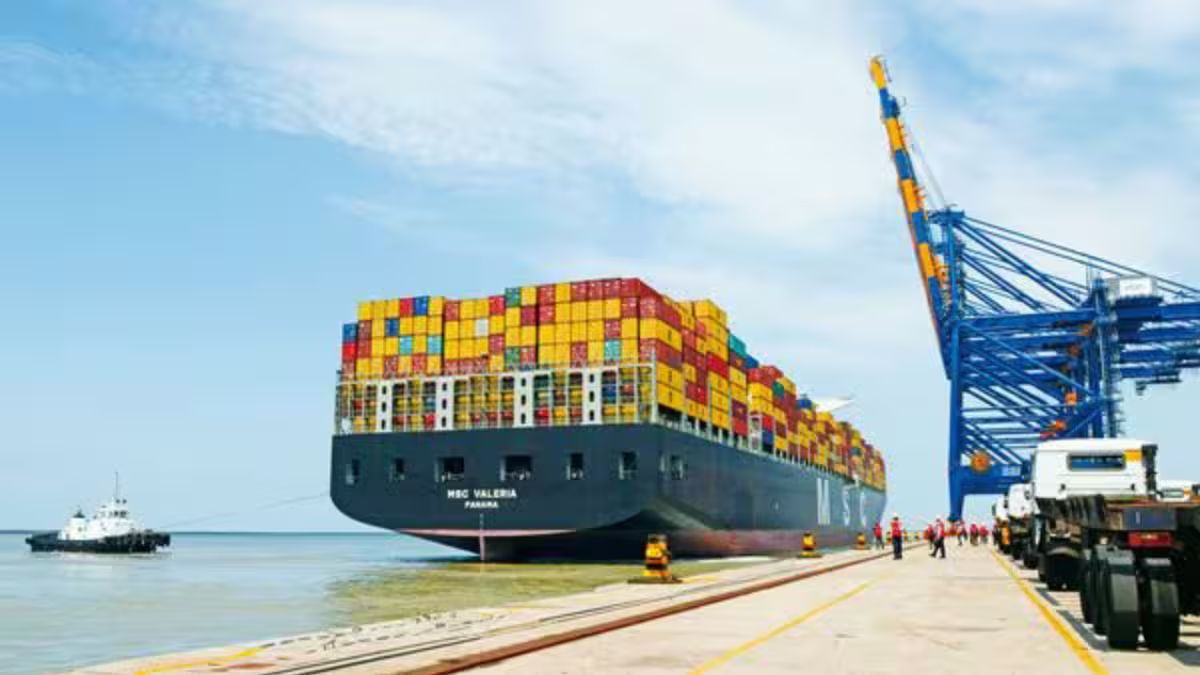) |
|
Global trade is currently grappling with a multifaceted crisis characterized by surging port congestion, escalating shipping costs, and geopolitical tensions, all converging to create significant disruptions in supply chains worldwide. European ports, in particular, are experiencing a dramatic increase in congestion, with major hubs like Bremerhaven, Antwerp, and Hamburg reporting substantial increases in waiting times for berth space. Bremerhaven, for instance, saw a staggering 77% increase in congestion, while Antwerp experienced a 37% rise, and Hamburg a 49% surge. These delays are primarily attributed to a combination of factors, including persistent labor shortages within the port operations and critically low water levels on the Rhine River, a vital artery for inland barge traffic. The Rhine's low water levels have severely hampered the efficient movement of goods to and from inland locations, exacerbating the overall congestion and creating bottlenecks in the supply chain. This confluence of labor constraints and logistical challenges on the Rhine has significantly impacted the flow of goods through these key European ports, leading to longer waiting times and increased costs for businesses reliant on these trade routes. The ripple effects of these localized challenges are being felt globally, as the interconnected nature of modern supply chains means that disruptions in one region can quickly cascade to others.
Adding another layer of complexity to the situation is the temporary rollback of tariffs between the United States and China. The US President's decision to temporarily suspend the 145% tariffs on certain Chinese imports has triggered a surge in shipping demand between the two economic giants. This surge is particularly evident in the transpacific eastbound trade, which is already showing signs of an early peak season. The anticipation of the re-imposition of tariffs after the 90-day pause, initially set to expire on August 14th, is fueling a frantic rush to move goods before the deadline. This accelerated shipping activity is further straining already overloaded port facilities and contributing to congestion not only in Europe but also in ports such as Shenzhen in China, as well as Los Angeles and New York in the United States. In these ports, the number of container ships awaiting berth has been steadily increasing since late April, indicating a widespread challenge in handling the increased volume of cargo. The interplay between tariff policies and global shipping patterns highlights the sensitive and interconnected nature of international trade, where policy decisions can have immediate and significant impacts on logistics and supply chain operations worldwide. The temporary reprieve from tariffs, while intended to provide some relief, has inadvertently contributed to a short-term spike in demand that has further exacerbated existing congestion problems.
Beyond the challenges posed by port congestion and tariff dynamics, geopolitical tensions are also playing a significant role in disrupting global trade flows. The ongoing attacks by Yemen-based Houthi rebels on cargo ships in the Red Sea have forced many shipping companies to reroute their vessels around southern Africa, adding considerable time and cost to voyages between Asia, Europe, and the United States. This longer route not only increases fuel consumption and transit times but also puts additional strain on shipping networks, further contributing to delays and driving up freight rates. The decision to avoid the Red Sea, a vital artery for global trade, underscores the significant risks associated with operating in conflict zones and the lengths to which shipping companies must go to ensure the safety of their crews and cargo. This situation highlights the vulnerability of global trade to geopolitical instability and the potential for even localized conflicts to have far-reaching consequences for supply chains worldwide. The increased costs and delays associated with rerouting around Africa are adding to the overall burden on businesses already struggling with port congestion and tariff uncertainties.
The cumulative effect of these challenges is a significant increase in shipping costs and uncertainty for businesses involved in international trade. Shipping lines are facing higher costs due to delays, increased fuel consumption, and the need to reroute vessels. In response, many carriers, including MSC Mediterranean Shipping Co., have already announced general rate increases and peak season surcharges, starting in June, for cargo from Asia. These increased costs are ultimately passed on to consumers, contributing to inflationary pressures and potentially impacting economic growth. The uncertainty surrounding future trade policies and geopolitical events is also making it difficult for businesses to plan their orders and manage their supply chains effectively. Importers and exporters are facing unseasonal swings in demand, as they try to anticipate future tariff changes and potential disruptions. This uncertainty makes it difficult for businesses to invest in new capacity and expand their operations, potentially hindering long-term economic growth. The combination of increased costs and uncertainty is creating a challenging environment for businesses involved in international trade, requiring them to be agile and adaptable in the face of constantly changing conditions.
In conclusion, the current state of global trade is characterized by a complex interplay of factors, including port congestion, tariff policies, and geopolitical tensions. These challenges are creating significant disruptions in supply chains, increasing shipping costs, and creating uncertainty for businesses involved in international trade. Addressing these challenges will require a multifaceted approach, including investments in port infrastructure, efforts to resolve labor shortages, and diplomatic efforts to reduce geopolitical tensions. Furthermore, businesses need to adopt more resilient supply chain strategies, including diversifying their sourcing and transportation options and investing in technology to improve visibility and responsiveness. The long-term health of the global economy depends on the ability to overcome these challenges and ensure the smooth and efficient flow of goods across borders. The situation requires careful monitoring and proactive measures to mitigate the risks and ensure the continued stability of global trade networks. The reliance of the world economy on these networks should not be underestimated, which highlights the importance of the various different factors and events currently disrupting the system and causing problems for everyone.
Source: Trump tariffs to Houthi attacks, world has a new trade headache: The long wait for ships to dock
